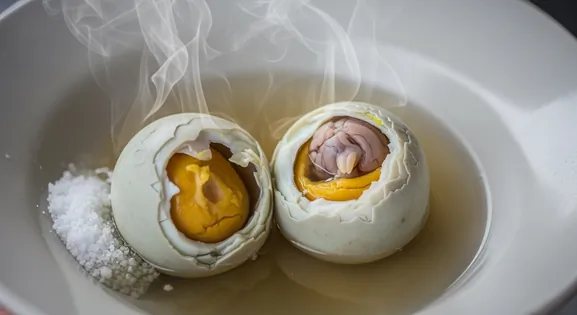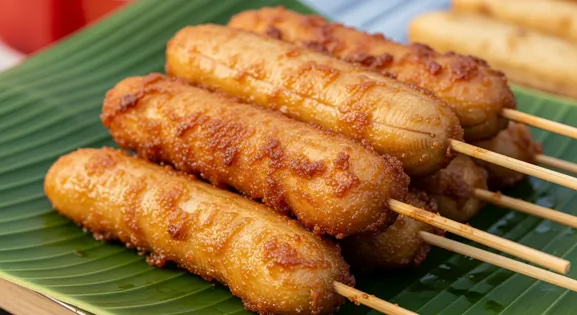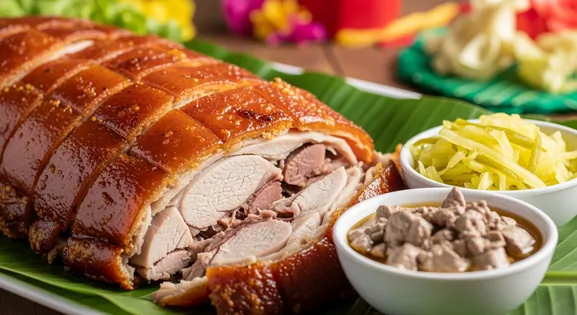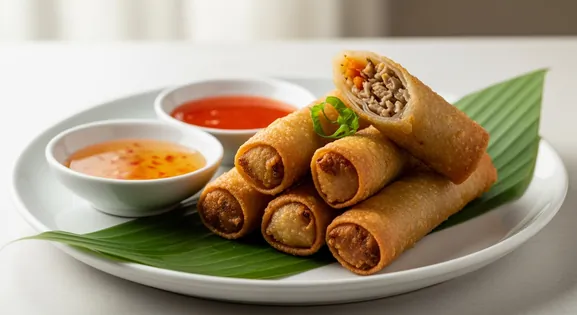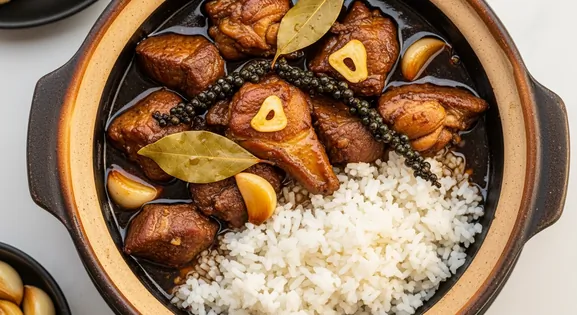
Adobo
AdoboManila's adobo: a dynamic blend of tradition and urban culinary evolution.
Step into Manila's vibrant streets, where the aroma of grilled meats and savory stews fills the air, a testament to its rich culinary heritage. This guide will help you navigate the city's diverse food landscape, from bustling markets to hidden stalls, to savor the true taste of the Philippines.
Filipinos love dipping sauces. Many dishes come with a "sawsawan" (condiment) station, allowing you to customize flavors with vinegar, soy sauce, calamansi, and chili. Don't be shy to mix your own!
"Carinderias" are local eateries. A long line, especially during lunch, indicates fresh, delicious, and affordable home-style Filipino cooking. Observe what locals are ordering.
While not always at street stalls, some eateries offer "kamayan" (eating with hands). It's a communal, authentic way to enjoy Filipino food. Wash your hands thoroughly beforehand.
Manila's historic Chinatown is a culinary labyrinth, offering generations-old Chinese-Filipino dishes from bustling eateries and street stalls. It's a vibrant hub for authentic flavors.
A bustling commercial hub, Divisoria Market offers a raw, authentic street food experience. Navigate its maze of vendors for traditional Filipino snacks and quick bites, often at budget-friendly prices.
Known for its vibrant, youthful atmosphere, Maginhawa Street is a culinary hotspot with diverse food concepts, from traditional Filipino to international fusion, often found in food parks and cafes.
A bustling and historic district centered around Quiapo Church, this market offers a glimpse into traditional Filipino life and cuisine, with vendors selling unique street foods and local delicacies.
Manila's street food culture reflects the Philippines' complex history, with dishes influenced by Spanish colonization, Chinese traders, and indigenous traditions. Food stalls (karinderia) and mobile vendors (jolly jeeps) populate the city's streets from dawn until late night, serving everything from savory meat skewers to sweet halo-halo desserts, creating a culinary landscape as diverse as the city itself.
Essential tips for making quality-focused choices when enjoying Manila's vibrant street food scene
Guide to navigating Manila's diverse food markets like a local
Flooding can affect food quality in street-side stalls
Low-lying areas like Quiapo and parts of Divisoria can flood quickly
A quality-focused option from street vendors during hot months (33-36°C / 91-97°F)
Cooler temperatures mean better food preservation
Binondo (Manila's Chinatown) offers the best combination of authentic flavors and food safety standards. For modern street food experiences, Maginhawa Street in Quezon City provides diverse options in a more regulated environment.
Making informed decisions is key. Look for busy stalls with high turnover, visible cooking processes, and good food handling. Vendors displaying sanitary permits often indicate higher quality standards.
Don't miss Filipino classics like sisig (sizzling pork face), isaw (grilled chicken intestines), kwek-kwek (battered quail eggs), balut (fertilized duck egg), and halo-halo (shaved ice dessert with mixed ingredients).
Early evenings (5-8 PM) offer the best balance between food freshness and vendor variety. Morning markets (6-9 AM) are excellent for traditional breakfast foods. Avoid midday hours when heat may affect food quality.
Manila's adobo: a dynamic blend of tradition and urban culinary evolution.
Manila's iconic Balut: a late-night street food adventure for the adventurous palate.
Manila's sweet, caramelized saba banana snack, perfect for on-the-go city life.
Manila's Lechon: Crispy, succulent, and the heart of every Filipino celebration.
Manila's crispy, savory lumpia: a beloved, versatile street food staple.
At Tasteplorers, our mission is to provide the most accurate and useful travel information in the world. To achieve this, all content on this site is created through our unique editorial framework. We utilize leading AI research tools, guided by our proprietary prompts, and a multi-stage validation process. This entire system is overseen by our editorial team to ensure everything we publish meets our high standards for accuracy, cultural nuance, and practical value for travelers.
Learn more about our Editorial Process and our Mission.
Explore the Philippines' vibrant food scene with our expert guide. Discover authentic Filipino cuisine from street vendors to regional specialties, empowering your culinary journey.
Navigate Thailand's vibrant food scene with our expert guide. Learn smart eating tips, discover authentic street food, and understand the rich culture behind Thai cuisine.
Discover Europe's diverse culinary landscape, from Mediterranean flavors to hearty Alpine fare. Learn to navigate markets, decode menus, and eat like a local.
Discover the vibrant cuisines of Latin America & the Caribbean. Our expert guide covers everything from Mexican street food to Peruvian ceviche and market tips.
Explore Oceania's diverse food scene. Learn about Polynesian earth ovens, Fijian feasts, and the vibrant café culture of Australia and New Zealand.
Explore Southeast Asia's diverse food cultures from Thailand to Vietnam. Get expert tips on navigating spice levels, choosing quality vendors, and understanding the rich traditions of the region.
